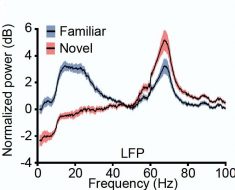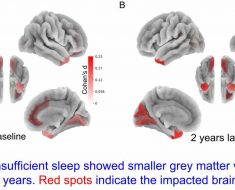A new Archives of Clinical and Medical Case Reports study provides new evidence demonstrating that the use of e-cigs increases the risk of acute respiratory syndrome.

Study: The Impact of Chronic Electronic Cigarette Use on Alveolar Macrophage Lipid Content: Case Report. Image Credit: LezinAV / Shutterstock.com
The widespread use of e-cigs
Electronic cigarettes (e-cigs) were introduced in the United States in 2007 and are commonly used by adults and adolescents. The liquid used in e-cigs generally contains nicotine, tetrahydrocannabinol (THC), flavorings, and/or sugar alcohol. Furthermore, propylene glycol, polyethylene glycol, vitamin E acetate, medium-chain triglycerides, and glycerol are added to increase the viscosity of these liquids.
E-cigs have gained popularity due to a rapid decrease in smoking tobacco products. Although many individuals who use e-cigs believe that this product is a healthier and more sustainable alternative to tobacco, they are not.
In the U.S., between 2019 and 2020, more than 2,000 cases of e-cigarette or vaping product use-associated lung injury (EVALI) were reported. Nevertheless, increased use of e-cigs has been reported among adults and high and middle school students. Thus, it is imperative to understand the long-term effects of chronic e-cig use.
How e-cigs impact the immune system
Alterations in the innate immune system, including abnormalities in lung macrophages, have been observed in EVALI cases. The key function of alveolar macrophages in the lungs has been associated with lipid homeostasis, which is essential for maintaining alveolar epithelial integrity, promoting innate immune function, and adequate gas exchange.
Pulmonary surfactant is a component of the airway surface liquid and contains a complex mixture of lipids and proteins. When surface tension in the alveoli is decreased, a surfactant regulates ventilation-perfusion matching.
An anomalous metabolism of surfactants by lung macrophages causes intracellular lipid accumulation and deposition of excess lipids in the alveolar space. Based on EVALI case reports, increased lipid content has been reported in lung-based innate immune cells, indicating damaged alveolar lipid homeostasis.
In the current study, researchers describe a novel macrophage phenotype isolated from bronchoalveolar lavage (BAL) fluid of a chronic e-cig consumer.
A new case study
The current case study is based on a 25-year-old female chronic e-cig user who used between two and four mL of e-cig liquid daily for more than two years. Although she had a history of smoking less than 10 packs of cigarettes per year, she did not smoke for over three years.
This individual used THC- and nicotine-containing products, thus making her suitable for this study. Another similar-aged female subject who never smoked a cigarette or used e-cigs throughout her lifetime was used as a control.
For 12 months prior to her bronchoscopy procedure, the study subject had not used any THC-containing products, and any nicotine-containing products she used were free from vitamin E acetate.
She did not complain of respiratory distress and was not taking any daily medications for chronic diseases. In addition, her lung examination report was normal. She also did not have any family history of lung diseases.
Clinicians collected BAL fluid from tertiary airways five times per airway. Alveolar macrophages were isolated from the BAL fluid sample using magnetic beads bound to CD15 in column chromatography.
Cellular isolates were collected and stained with Oil Red O (ORO) to determine lipid accumulation. This method of cellular staining is effective for histologic evaluation that indicates cytoplasmic droplets of differential sizes and subcellular localization.
Histological analysis revealed a heterogeneous distribution of ORO stain across the alveolar macrophage population. Furthermore, some cells contained a high concentration of ORO stain, while others showed no staining.
The lipid content within alveolar macrophages was quantified based on a lipid-laden macrophage index (LLMI). Compared to the control, alveolar macrophages obtained from the chronic e-cig user exhibited a significant increase in the LLMI.
Transmission electron microscopy (TEM) was used to study alveolar macrophage ultrastructure and determine the nature of the lipid accumulations.
The ultrastructural analysis revealed a heterogenous lipid material accumulation in the membrane-bound intracellular compartments of alveolar macrophages of the e-cig user. Conversely, these structures, which were referred to as e-cig-associated inclusion bodies (EIBs), were absent in the alveolar macrophages of the non-e-cig user.
Implications
Alveolar macrophages are one of the first cells in the lungs that respond to an inhaled foreign substance. This is the key reason for analyzing the ultrastructure of alveolar macrophages that were isolated from the BAL fluid of an e-cig user.
The current study identified a novel EIB structure in the e-cig user’s lung. The authors hypothesize that EIBs were composed of vaporized derivatives of lipids in the e-cig liquid.
In the future, more research is needed to determine the composition of EIBs and evaluate altered lipid pathways. However, these findings will assist in improving the current understanding of the clinical implications of long-term e-cig use.
- Ruttenberg, M., Armstrong, D., Mellinger, D., et al. (2022) The Impact of Chronic Electronic Cigarette Use on Alveolar Macrophage Lipid Content: Case Report. Archives of Clinical and Medical Case Reports 6; 689-692. https://www.fortunejournals.com/abstract/the-impact-of-chronic-electronic-cigarette-use-on-alveolar-macrophage-lipid-content-case-report-3600.html.
Posted in: Medical Science News | Medical Research News | Medical Condition News
Tags: Adolescents, Alcohol, Alveolar Macrophage, Bronchoscopy, Chromatography, Chronic, Cigarette, Column Chromatography, Electron, Electron Microscopy, Immune System, Intracellular, Lipids, Lungs, Macrophage, Magnetic Beads, Membrane, Metabolism, Microscopy, Nicotine, Phenotype, Research, Respiratory, Smoking, students, Syndrome, Tetrahydrocannabinol, Tobacco, Vaping, Vitamin E

Written by
Dr. Priyom Bose
Priyom holds a Ph.D. in Plant Biology and Biotechnology from the University of Madras, India. She is an active researcher and an experienced science writer. Priyom has also co-authored several original research articles that have been published in reputed peer-reviewed journals. She is also an avid reader and an amateur photographer.
Source: Read Full Article





